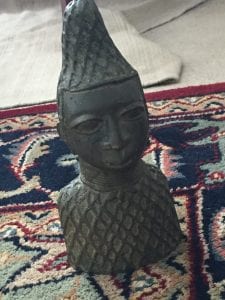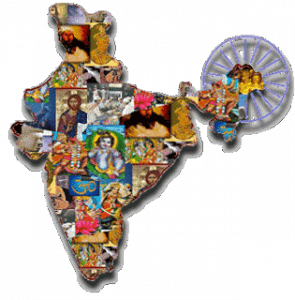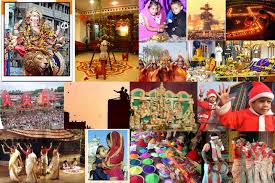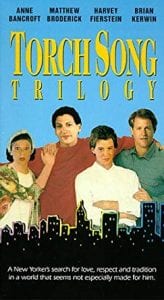The statue in this picture is a bronze Benin statue. These statues have been around in my house ever since I was a baby. The Benin bronze statues date back to the 19th century and are a representation of the Kingdom of Benin, in Nigeria. The pieces are mostly made of brass and bronze but there are also some that are made from wood and ceramic. The sculptures would make the statues to resemble members of the royal family. This image of this statue represents my Nigerian culture. I identify collectively with being a Nigerian American. I was born in Lagos, Nigeria and lived in Benin where these types of statues were made and displayed in the Benin Palace. We moved to the states when I was still young so I am Americanized and have integrated some values and beliefs from both cultures.
“Sex Before Marriage”
Culture is particularly the manifestations of human achievement regarded collectively. Around the world there are different cultures that we may experience to come around including our own culture that we believe in. It contains a social behavior that is found in human societies and is socially transmitted customs, knowledge and materials. As a believing Christian and learning a lot about my culture, there was a decision to further looking into different cultures to understand their beliefs. Mostly being an ethnocentrism believer, which assumes that one’s culture and way of life represent the norm or all others, didn’t realize that there were other cultures that varied.
My culture believes that “No Sex Before Marriage”. Of course, Christians have this dream that you must get married, find the love of your life and have babies. You would think possible that, that’s something initially sounding right. Now in days, in this society, it doesn’t always work out to be that way. The Bible is the same focus and the rule book that Christians follow by. We read and follow the guide lines to have further life in the afterlife. The common word in the bible that explains the “No Sex Before Marriage” is used in reference “Porneia”. This catch the phrase for any sexual misconduct outside of marriage. Let’s face it, sex plays a big role in life as of today. Different cultures have a similar meaning when it comes down to marriage and sex. If this was obeyed then there would be less pregnancies, transmitted diseases, and even children growing up without parents. Culture is what we believe in basically to keep us safe.
Black Hair Culture
Hair styles serve as a way to express one’s identity and beauty in Black Culture. Both women and men use hair styles to show one’s personal expression of who they are. More recently, Black women have began to embrace the natural beauty of their own hair, creating a new market for the hair care industry. I personally have been on my own “hair journey” cutting all my relaxed hair, to the root, and starting on my natural hair journey. I have learned to love and care for my kinky hair. You can ask almost any Black woman, and she will almost certainly have her own personal story or journey with her hair. From tight kinky coils to loose bouncy curls or waves, Black hair comes in so many different curl patterns. It has been used to oppress people, in fact certain hairstyles such as dreadlocks, are still not allowed for certain workplaces. I have even seen recently where a child was suspended from school for wearing braided extensions. I think we all remember what happened when Zendaya wore those faux lox extensions on the red carpet. For better or worse, Black hair can be a hot topic. I love my natural hair, it is a part of who I am
Unity in Diversity
From geographical features to culture, India is adorned with immense diversity. You can experience everything from freezing cold temperatures in the Himalayan mountains, dry deserts in states like Rajasthan, and hot temperatures in states like Kerala. Each state has its own unique culture, history, and charm, making each so different from the rest. The people speak different languages, wear different clothes, and enjoy different types of cuisines. All the world religions are present in India, each living in harmony with the other. Yet, despite all this diversity, there is a thread of unity in India. No matter how many times I go to India to visit family, it still surprises me that there is so much diversity in the country. In spite of these diversities, I feel at home wherever I am in the country because you can feel the unity people feel with each other.
The Autonomous Sensory Meridian Response (ASMR) Community

Ok, buckle up because this is a weird one. This part of my culture does not belong to my country of origin, nor to any other country. The ASMR community is a cultural artifact that could only have sprouted and flourished in the cyberspace.
Autonomous Sensory Meridian Response is the informal—yet science-y sounding—name given to an odd sensation. It is a tingly feeling that runs down your spine elicited by specific stimuli, and it can be pleasurable as well as relaxing. It appears that this is not a universal phenomenon, but who is affected or why is still a mystery. In any other period of history, this sensation would be reduced to an interesting factoid. But in the digital age, it became the epicenter of a worldwide community.
Around 10 years ago, forums and messageboards such as steadyhealth and Yahoo! became flooded with discussions about a peculiar tingle that some people feel. Prospective names for it were thrown around, and eventually ASMR stuck. Nothing major came out of these early days, but with a label, the community had something to cluster around. A few years later, Youtube experienced massive growth, and channels exclusively dedicated to ASMR began to establish themselves in the platform. “ASMRtists”, the content creators, probed around and experimented with which “triggers” consistently induced the tingles. Soon, there were countless Youtubers whispering into microphones and tapping on diverse objects, and the viewership accordingly became larger and larger. Presently, ASMR channels surpass a million subscribers, and some have as many as half a billion total views. People all around the world congregate to discuss their favorite ASMRtists and triggers on subreddits, dedicated blogs, and chans. The unprecedented popularity of the phenomenon caught the attention of major media outlets like Vox, Buzzfeed, and The Atlantic. Even scientists became interested in ASMR, and there is a burgeoning field of research attempting to discover what causes these odd tingles and whether they have therapeutic applications.
When someone says “culture”, “weird internet videos with people whispering” is not the first image that springs to mind. But culture is the only name that can be given to something that generates aesthetic content, media responses, commercial products, scientific research; and ultimately binds people together.
Caribbean Fest
This image is a snap shot of a celebration called Caribbean Fest. A few times out the year, everyone gets together and celebrate Caribbean cultures. This is not an event that you would have to be Caribbean to attend. It is literally for everyone, all ages and races. Although it isn’t required, people dress up in their country’s colors, when attending the festival. Some even spend thousands on their costumes. There is also a lot of ethnocentrism. Every culture feels that they are the best. Usually those with the higher ethnocentrism tend to spend more on their costumes. The event has music and food from the Caribbean cultures. They would play reggae, soca, calypso,and many more. A few dishes that would be served at the festival is ox tail with rice and peas and plantain, fried fish, curry goat with white rice, and crab callaloo. These collectivistic cultures come together and enjoys each others company. These customs have been going on since 1971 and are going to continue for many years to come.
Gay Culture: Torch Song Trilogy
Attitudes and beliefs have changed a great deal since the early 1990s regarding gay people and their culture. Torch Song Trilogy pre-dates this by about 10 years and shows what gay lives and goals were like before major victories for equality and an understanding of HIV. While times and attitudes change, people generally remain the same insofar as goals are concerned. I would highly recommend this movie to anyone who’s ever wondered about “the gay agenda” or how people can walk a line between “drag queen fabulosity” and “a nice quiet home life”. I believe this movie does a fantastic job of demonstrating in real-time the values and beliefs and most importantly the experience of gay life regardless of decade. Moreso, while only recently the idea of representation has come to the focus of conversations it’s always been true. This film gave is culturally important because it became a megaphone for a culture and a bridge between worlds. While the main character is fairly sure of himself and what he wants, he faces some hard truths about HOW he’s gone about working toward his goals and how he interacts with friends, lovers, and family. Fair warnings: This movie will RIP YOUR HEART OUT and also if you’re not used to Harvey Firestein’s voice it might take a little getting used to.
Butter Chicken & Naan
This image shows Butter chicken curry along with Naan Bread. Butter chicken is a traditional Indian Chicken Curry cooked in creamy rich sauce made with cashews, almonds, tomatoes and butter. Naan Bread is a leavened, oven-baked flatbread found in the cuisines mainly in India. Food is important to our culture because that is a time when family and friends can come together and share some quality time together. A meal is taken very seriously and usually all of the family members are required to eat together. This makes sure that there is time set aside each day for the family to talk to one another. Eating this food shows cultural identity because it is something that everyone shares. Indian people that live in America show the cultural reaffirmation effect because they want to show their traditional values more by eating their home countries food which in this case would be butter chicken and naan.
Constant Celebrations with Song and Dance
In my family, there was always a party, celebration or gathering of some sort. My mother, father and great-grandmother had friends and family from all over the US and just because we lived in Las Vegas, this was not an excuse to dis-invite or have a celebration without them. Rightfully so, my parents were married on New Year’s Eve and every year, they planned a huge party to celebrate the New Year and their anniversary. As children, my sister and I knew what to expect – dancing, large amounts of food to include an open-pit barbeque feast, adults drinking, and a lot of laughter. In African-American families, it is typical for us to celebrate with song and dance – adults also involve the children so that they can “show them the new dance moves”. These celebrations have been depicted in television shows dating back to the 1970’s and the most notable were Soul Train and Good Times. I can remember waking up on a Saturday morning excited about watching these shows and even today, I take the time to watch re-runs to remember “the old days”. I chose the picture above because it is a famous portrait by artist Ernie Barnes. This portrait could be seen throughout the seventies and in a majority of television shows depicting African-American song and dance.
Christmas (Weihnachten)
Christmas has always been a special occasion for my family and I. It is a time where everyone gathers to spread our love and show appreciation for one another as well as a time to relay our family’s folklore and traditions. As a child, my Great Grandmother Sara, would tell my siblings and I stories of an angelic child with locks and wings that shined gold. This figure would bring Geschenke (presents) to children who were good of heart, but only did so if we went to bed accordingly and didn’t try to see the small angelic figure. If we did try, the Christkind would not come and we would have to wait until next year. My parents also explained the figure St. Nicholas to us. They told us that both the Christkind and Santa Claus worked together in order to spread the joy of Christmas. They explained that Santa Claus took care of most of the children in North America while the Christkind took care of most of the children in Europe. Though there is much controversy in Europe regarding Santa Claus and the Christkind (they are actually opposing figures in Europe) my family incorporated both the American and German culture into one in order for us to have a sense of where we came from and where we live to this day.













